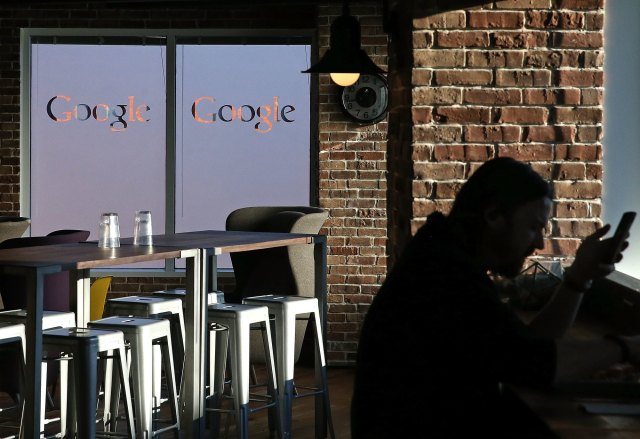Food can control a workforce. Credit: Mark Wilson / Getty

“According to Gordon Gecko, lunch is for wimps.” One might expect an icon of the Eighties to be behind the times – and on this issue he most certainly is.
In 2019, corporate America sees lunch not as a distraction, but a tool for attracting, retaining and getting the most out of employees.
It’s a point well made by Priya Krishna in the New York Times:
“Free food has been a formidable presence in the American workplace since the 1990s, when Bloomberg and tech start-ups like Google began to put out snacks in hopes of making employees happier or healthier, more productive and less likely to stray far from the task at hand.
“But today, the practice is almost obligatory, as businesses go to extraordinary lengths to provide food without charge, or at a sharp discount.”
Her report is full of delicious nuggets, like this one:
“Everyone who works at Ben & Jerry’s headquarters in Burlington, Vt., is entitled to three free pints of ice cream for each day of work…
“…employees [also] have an on-site gym to work off what they have come to call the ‘Ben 10.’”
Yes, you read that right. Three free pints of Ben & Jerry’s ice cream. Every. Working. Day.
Per person.
Three!
By the way, the unit of measurement alluded to in the “Ben 10” is pounds (of body weight), but I’m surprised it isn’t stones. Talk about corporate largesse.
The Vermont ice cream company has long been associated with progressive political causes, so perhaps giving away free stuff is part of the package. However, Krishna tells us that the right-leaning American Enterprise Institute has a similar policy, albeit one featuring a wider range of food groups:
“…employees are treated daily to an elaborate buffet with appropriately white-shoe fare like prime rib, crab cakes and housemade beignets.”
Very nice, but shouldn’t a free market think tank be handing out this bonus in the form of cash – thereby maximising consumer choice?
But, of course, it’s not just about the monetary value of the freebie. To attract and retain skilled staff in global cities, leading employers have to compensate them for the high costs of living and working there. Naturally, most of that comes in the way of higher salaries. However, fatter pay packets are skimmed-off by landlords in the form of higher rents – pushing workers further out from city centres and into smaller dwellings. Cooking a proper dinner in a tiny, shared kitchen after a long commute isn’t the most encouraging of prospects – which makes the option of eating well at work all the more valuable.
Are employers doing this out of pure compassion? Obviously not – the benefits go well beyond keeping potentially footloose employees happy. For a start, it keeps them on campus at lunchtimes and a central eating area facilitates communication between personnel in different parts of the building. Well-fed employees are less eager to rush home at the end of the day – all the more so if dinner is also on the menu. Other inducements to presenteeism include snacks and even alcohol.
Ultimately, the free or subsidised food is about creating a sense of belonging – of membership to a real or imagined professional elite. To literally have one’s feet under the table is a reminder of the other, more substantial benefits that an insider enjoys – unlike, say, an outsourced contractor. Now, you wouldn’t want to put that at risk, would you?
It’s interesting that when employers don’t lay on the communal goodies, employees often provide their own. When I was working in the UK civil service, I was struck by the inexhaustible supply of sugar-laden snacks spread out on every inch of spare desk space. To be clear, none of this was purchased at the public’s expense – such profligacy in the public sector being politically toxic. Rather, the ‘bird tables’ (as they’re known in Whitehall) would be self-catered by unspoken agreement between colleagues. It can be seen as a kind of gift-giving ceremony – the manifestion of an ancient instinct in the open-plan surroundings of the 21st century.
The sharing of food and drink is one of our most basic social impulses. It is, or was, a core function of the family and community – even to the extent of acquiring deep religious significance.
In the modern era, at times and places when the governed were weak and government was strong, the breaking of bread was collectivised by the state – a power that has been used to feed the people, but also to control them.
That power is now in other hands.










Join the discussion
Join like minded readers that support our journalism by becoming a paid subscriber
To join the discussion in the comments, become a paid subscriber.
Join like minded readers that support our journalism, read unlimited articles and enjoy other subscriber-only benefits.
Subscribe